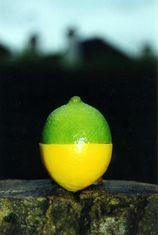
Lemons are probably the most under-rated of all citrus fruits by consumers, simply due to their year round availability.
However, this most ancient of fruit, believed to have been discovered in the Punjab, and probably a hybrid of lime and pummelo, has reached a point in consumption where it is regarded in much the same way as pepper and salt.
Its arrival in the Mediterranean, via the Arab world, can be traced as far back as 1100, where, because of its adaptability, it quickly spread along the coastal areas. Ultimately, in historical terms, it was a short step across to the Americas which gave it the prominence to claim to be one of the first truly international fruit crops, along with the date palm.
Meanwhile, the public remains unaware of the varieties - commercially there are about 20, which vary far less than oranges and mandarins. Neither are they aware that cultivation techniques, combined with the nature of the fruit, allows it to reach maturity on the tree while flowering at the same time.
Despite its widespread usage, however, it is almost impossible to come up with any meaningful figure for the sheer scale of production.
While there are obviously both very large and small plantations, fulfilling the needs of the world, there are millions of trees tucked away in the corners of haciendas, fincas and their equivalents, which provide a crop for a family or a local community.
Allowing for this, there is then the divide within the international market itself, between fresh and processed fruit. Lemon juice, pulp, oils and much more are an integral part of everything from soft drinks to cosmetics.
Experts have assessed that there is probably about eight million tonnes grown in a ratio of three to one in favour of the northern hemisphere. In trading terms this drops to around 1.3mt of fresh fruit, with a further 1.5mt going into processing.
In comparison with many countries, where serving lemons with virtually every dish is almost obligatory, the UK, while an important market, is still small in comparison.
Estimates indicate that UK sales are valued at some £27m, around 65,000t, with over half coming from Spain, supported by Argentina at 14 per cent, South Africa with 12 per cent and Turkey, 10 per cent.
Limes, however present a different picture. Hardly known 20 years ago outside the upmarket gin and tonic set, the fruit rose to fame mainly on the recommendation of cookery writers, whose successors now provide an endless stream of programmes and articles.
If not as common place as their cousins, they are widely available to the point where they are not just retailed in their own prepacks, but also make up dual packs with lemons. Similarly the retail price remains consistent over several months.
Being a tropical fruit this has also provided an opportunity in the UK for countries such as Mexico, the world’s largest producer, along with Brazil and the US. The limes’ popularity has also provided a niche market for several Caribbean islands. The UK market is valued at around £4m, representing nearly 8,000t.
While there are many types, trade is based on the Persian, Tahitian or Bearss varieties, the latter of which is believed to come from the Middle East and recognised by the European market in the mid 19th century.
With Florida being a hot spot on the tourist map, many people have heard of Key Lime pie. The fruit itself is in fact different being smaller and more seeded. It originated in Malaya and is mainly used quite widely by the processing industry.
The two are almost inseparable, and a judge of external quality is based on intense colour, yellow and dark green respectively, as well as shape. The common judgement is fruit has to be thin-skinned, virtually seedless and full of juice.



